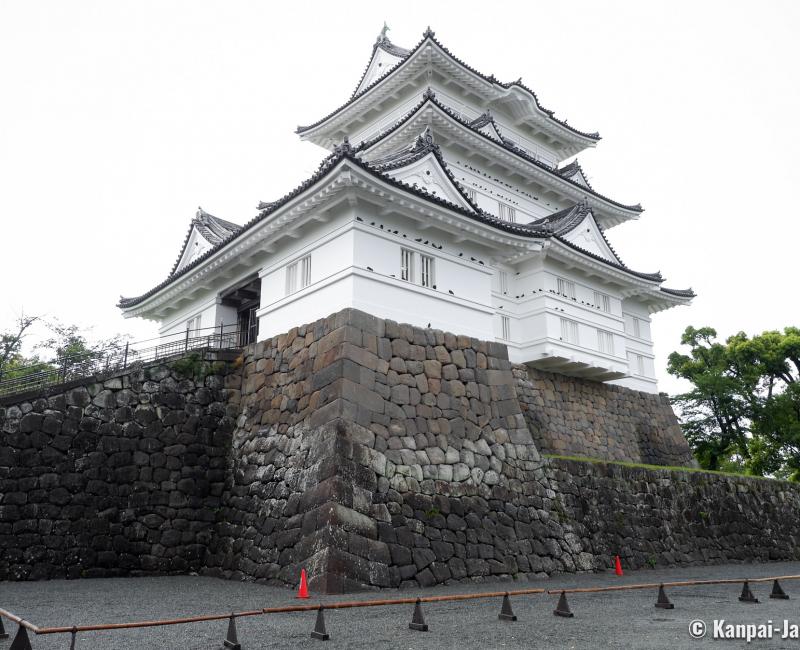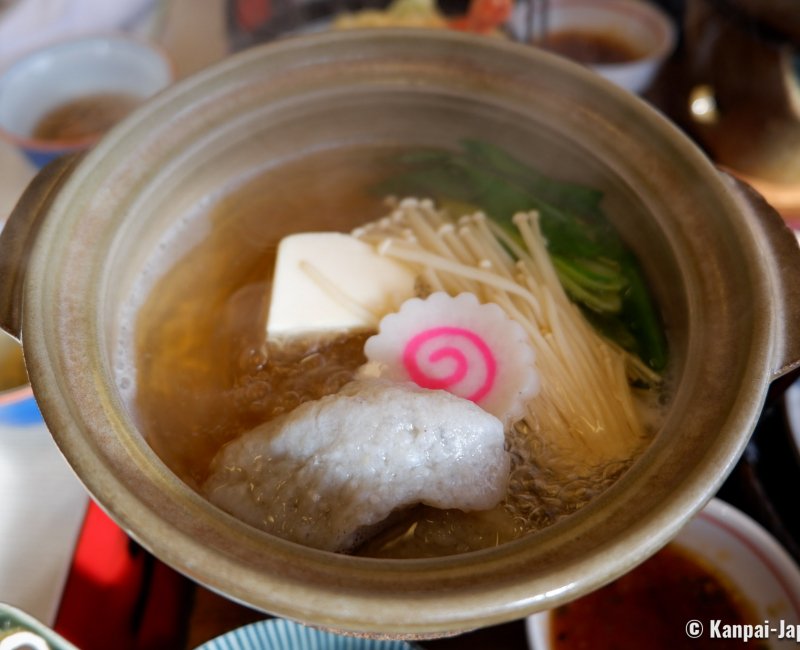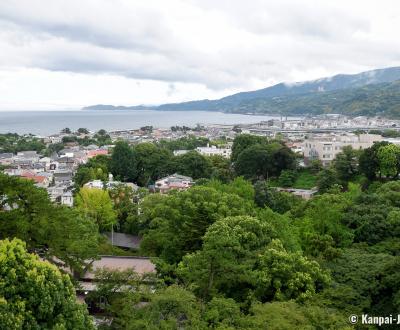Odawara
The Fortified Provincial Town on the Tokaido Road
Odawara is a Japanese town located on the shore of Sagami Bay, in Kanagawa prefecture in the south-west of Tokyo. Many travelers do not consider stopping by this easy gateway to Hakone, Mount Fuji and Izu peninsula, but this ancient feudal city can nonetheless provide many interesting visits.
Odawara is now a quiet coastal town, but it used to be one of the most powerful cities in Japan’s Kanto region. In the 17th century, with the advent of Edo period (1603 – 1868), the city became the tenth post station on the famous Tokaido road that connected Edo (nowadays Tokyo) to Kyoto along the Pacific coast. Odawara thus took advantage of its ideal location to develop through commerce and trade.
But the city’s historical heritage is better understood when going back further in past. Odawara was the bulwark of the very powerful Go-Hojo clan (1493 – 1591) constituted by independent warriors and who reigned at that time on the eastern part of Japan.
Odawara-jo, the castle 🏯, was built from 1418 and was the biggest fortified construction in Sengoku period (mid-15th century to late 16th century), until 1585 and the construction of Osaka Castle’s main keep. Odawara Castle is now the symbol of the city and is a heritage of the Go-Hojo’s political and cultural hegemony, a clan that had succeeded in constituting its own kingdom with specific rules and traditions.

A touristic downtown
When arriving in Odawara by JR train 🚅, the downtown area is an easy walk. A few minutes away from the station, Odawara Castle offers an outstanding view on the city and Sagami Bay from its upper level. Downwards, the moats are surrounded by Joshi Koen, a landscaped garden renowned for the successive blooming of plum trees in February, cherry trees 🌸 and wisterias in spring and hydrangeas in June. The stately gates Tokiwagi, Akagane and Umadashi, each protecting their own areas, are probably as intimidating for today’s visitors than they were for yesterday’s enemies.
On the other side of the moats, towards east, stands the small Matsubara-jinja shrine, whose origins are unclear but estimated to date back to a thousand years ago. Tourists are scarce, and visitors here are mainly worshippers.
Its nice entrance crosses a little bridge over a tiny pond and is framed by wonderful pine trees. The path to the beautiful wooden main hall Honden is surrounded by lovely stone lanterns 🏮, crosses two successive torii ⛩️ gates, an ablution fountain (chozuya) and a couple of steps.
Reitaisai, the city’s most important festival
During the Golden Week, the shrine holds the Reitaisai festival, the large yearly event in Odawara lasting three days from May 3 to 5. Mikoshi portable floats representing ships parade in the streets before being set afloat in the nearby ocean. Participants sing together the fishermen’s song kiyariuta, which makes this matsuri unique.
What to eat in Odawara?
A little bit further south to the center of the city, we recommend going to Kamaboko Dori Street. It was once popular among fishermen and now offers about thirty traditional shops, some of which are specialized in kamaboko, a kind of white fish paste, steamed and molded in a cylinder.
This culinary dish, prepared in Japan since the 14th century, is used to complement various dishes such as soups, rice and noodles. Ramen 🍜 amateurs have certainly already seen in their bowl the famous pink tourbillion naruto, which is a kamaboko type.

A city between the ocean and the mountain
Miyukinohama is Odawara’s beach 🏖, whose long sand and pebble shore offers pleasant walks to the sound of the waves. An unobstructed view towards the horizon unfolds on one side, while there is a beautiful view on the city towards the surrounding mountains. However, this ideal landscape is tampered with a freeway following the Pacific coast and passing along the beach.
Lastly, we recommend ending the visit in Enoura Observatory, located on Odawara south coast, near Nebukawa station. The site was designed by artist Hiroshi Sugimoto and will please amateurs of contemporary art in nature.
Odawara is an easy one-day trip excursion, with a convenient access by train from Tokyo, and can also be explored on a stopover on the way to Fuji 🗻-Hakone-Izu National Park.

